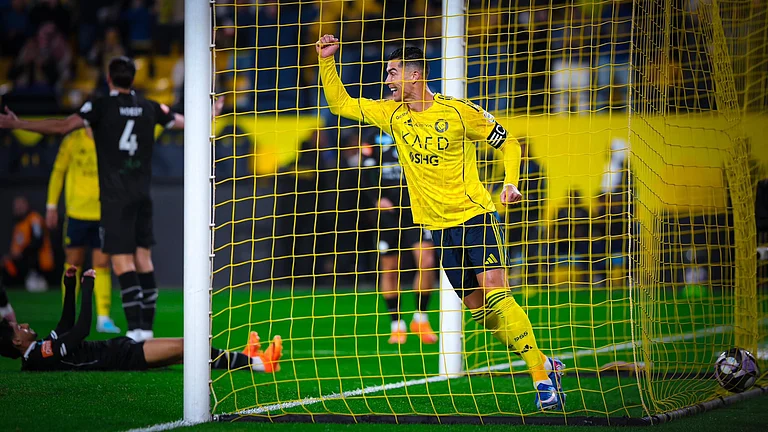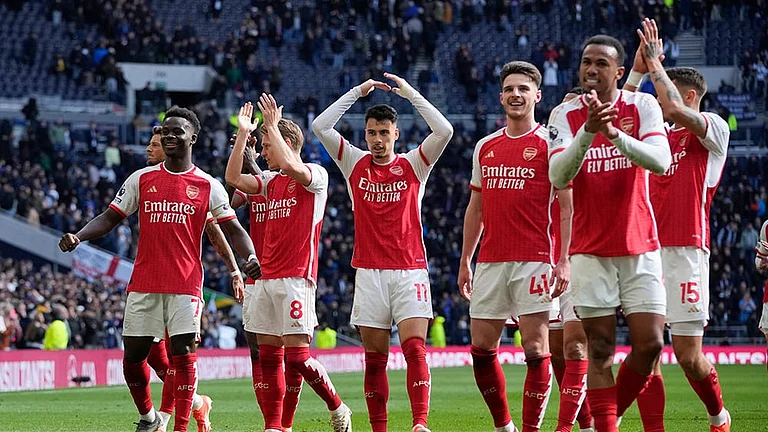Prime Minister Narendra Modi on Sunday inaugurated the new Parliament House amid a boycott by most of the Opposition parties.
Modi unveiled the plaque at the new Parliament House to mark the inauguration and installed the Sengol in the Lok Sabha chamber. The Centre has claimed that Sengol is the symbol of the transfer of power from the British to India.
Modi protstrated before the Sengol and sought blessings from high priests of various 'adheenams' in Tamil Nadu with the holy sceptre in hand.
The inauguration of the new Parliament House took place amid a boycott by the Opposition. A total of 20 parties have boycotted the inauguration and only five Opposition parties are in attendance, besides the Bharatiya Janata Party (BJP)-led ruling coalition.
Parliament inauguration with multi-faith prayer
A multi-faith prayer was held to mark the occasion of the inauguration of the new Parliament House.
A video of the prayer showed religious figures of different faiths holding a prayer at the site. It has been called a 'sarv-dharma' prayer.
The inauguration took place amid Vedic chants. Dressed in traditional attire, Modi walked into Parliament premises from its Gate No. 1 and was welcomed by Lok Sabha Speaker Om Birla. Amid Vedic chants by priests from Karnataka's Shringeri Math, Modi performed "Ganapati Homam" to invoke Gods to bless the inauguration of the new Parliament building.
Modi then carried the Sengol in a procession amid tunes of "nadaswaram" and chanting of Vedic mantras to the new Parliament building and installed it in a special enclosure on the right side of the Speaker's chair in the Lok Sabha chamber.
Before installing the Sengol, Modi and Birla performed a prayer ceremony for the inauguration of the new Parliament House, according to ANI.
Modi felicitates workers, greets priests
On the day of the inauguration of the new Parliament House, Modi also felicitated some workers associated with the project.
Modi felicitated with shawls and souvenirs some workers who played key roles in the construction of the new Parliament building.
Visuals of the felicitation shows Modi engaging with the workers one by one as an announcer informs of their individual roles in the project.
A video also surfaced that shows Modi bowing and greeting each priest that had come there to hand the Sengol for the inauguration.
Inauguration amid Opposition's boycott
The Parliament House's inauguration took place amid a boycott by the Opposition parties.
A total of 20 Opposition parties boycotted the inauguration ceremony. The boycott was rooted in the fact that Modi, not President Droupadi Murmu, was inaugurating the Parliament.
The ruling BJP was present in full force at the inauguration, including several Union ministers, including Rajnath Singh, Amit Shah, S Jaishankar, Ashwini Vaishnaw, Mansukh Mandaviya, and Jitendra Singh, along with BJP-run states' chief ministers, including Yogi Adityanath, Himanta Biswa Sarma. BJP president J P Nadda among other leaders were also present on the occasion.
Features of the new Parliament House
The new Parliament building has been constructed by Tata Projects Ltd.
The new Parliament House will have a grand constitution hall to showcase India's democratic heritage, a lounge for MPs, a library, multiple committee rooms, dining areas and ample parking space.
The triangular-shaped four-storey building has a built-up area of 64,500 square metres.
The building has three main gates named Gyan Dwar, Shakti Dwar, and Karma Dwar.
It will have separate entrances for VIPs, MPs, and visitors.
The material used for the new building has been acquired from various parts of the country.
The teakwood used in the building was sourced from Nagpur in Maharashtra, while the red and white sandstone was procured from Sarmathura in Rajasthan. The sandstone for the Red Fort and Humayun's Tomb in the national capital was also known to have been sourced from Sarmathura.
The Kesharia green stone has been procured from Udaipur, the red granite from Lakha near Ajmer and the white marble has been sourced from Ambaji in Rajasthan.
"In a way, the entire country came together to construct the temple of democracy, thus reflecting the true spirit of Ek Bharat Shreshtha Bharat," an official told PTI.
The steel structure for the false ceilings in the Lok Sabha and the Rajya Sabha chambers have been sourced from the union territory of Daman and Diu, while the furniture in the new building was crafted in Mumbai.
The stone 'jaali' (lattice) works dotting the building were sourced from Rajnagar in Rajasthan and Noida in Uttar Pradesh.
The materials for the Ashoka Emblem were sourced from Aurangabad in Maharashtra and Jaipur in Rajasthan, while the Ashok Chakra donning the massive walls of the Lok Sabha and the Rajya Sabha chambers and the exteriors of the parliament building were procured from Indore in Madhya Pradesh.
The new Parliament building used manufactured sand or M-sand from Charkhi Dadri in Haryana for creating concrete mix for the construction activities.
M-Sand is considered environment friendly as it is manufactured by crushing large hard stones or granite and not by dredging of river beds.
The fly ash bricks used in the construction were sourced from Haryana and Uttar Pradesh, while brass works and pre-cast trenches were from Ahmedabad in Gujarat.
(With PTI inputs)


























